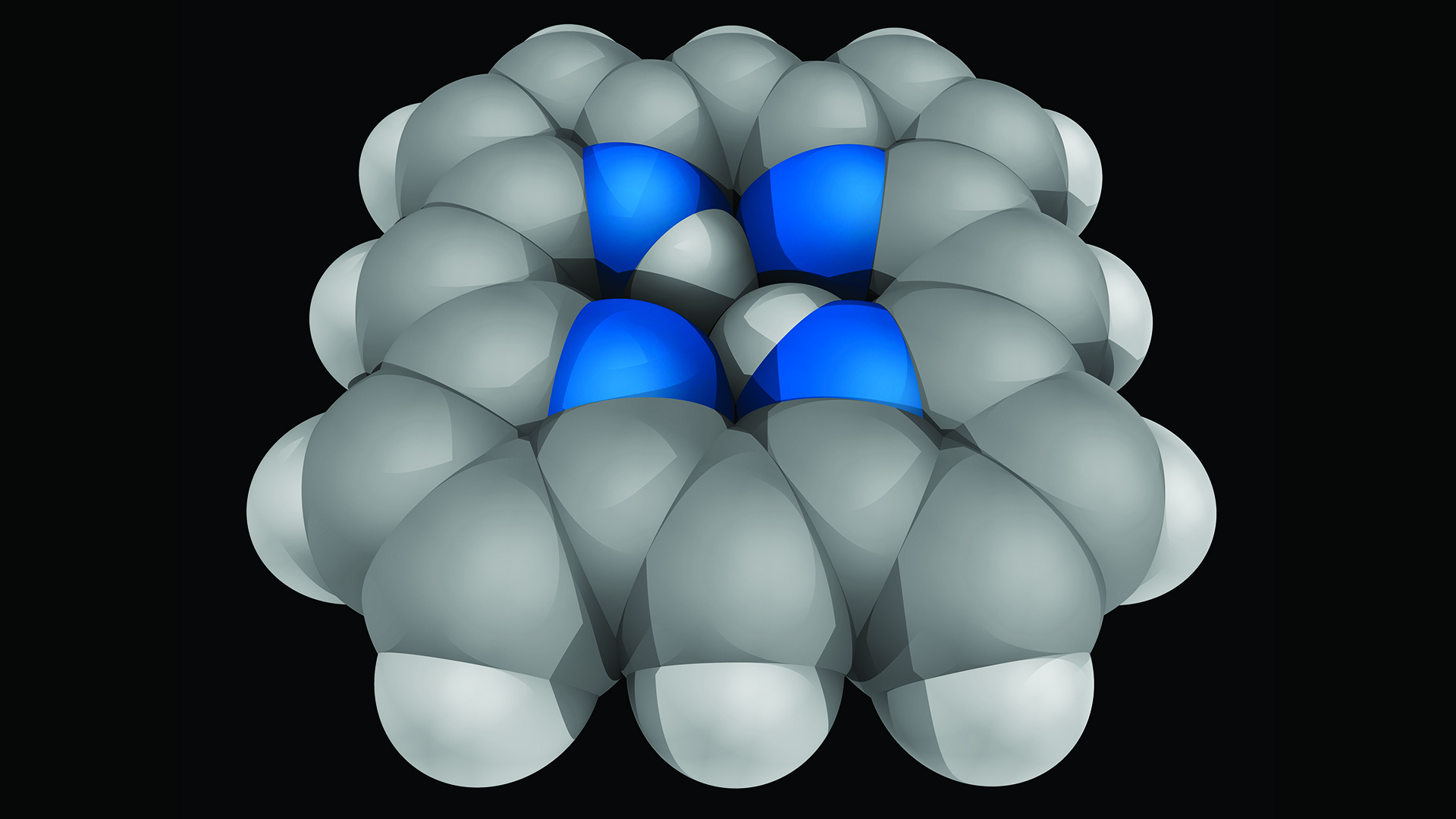Russian scientists from the Institute of Chemistry of Solutions.
G.A.
Krestov Russian Academy of Sciences and the Federal Research Center for Chemical Physics.
N.N.
Semyonov of the Russian Academy of Sciences have developed new compounds to create solar battery components on their basis, RT was told in the press service of the Ministry of Education and Science of the Russian Federation.
The results of the work are published in the journal Dyes and Pigments.
Scientists synthesized new porphyrins, as well as their complexes with zinc and cobalt, containing carbazole substituents.
Porphyrins are substances whose molecules are based on the porphin macrocycle and which include hemoglobins, chlorophylls, and a number of enzymes.
Porphin molecule
Gettyimages.ru
As the authors of the work note, porphin and its derivatives are universal building blocks for obtaining molecular systems, including photosynthetic systems that use light to generate energy or synthesize organic compounds.
“The introduction of carbazole substituents made it possible to achieve good solubility, film formation and other properties.
One of these properties is the ability for photoinduced charge separation (transfer of electrons under the influence of light.
-
RT
) in molecular systems based on porphyrins, which is important not only for photosynthesis, but also for converting solar energy into electricity, ”explained the candidate of chemical sciences , Senior Researcher, Laboratory of Synthesis and Reactivity of Metalloporphyrins in Solutions, Institute of Chemical Chemistry, Russian Academy of Sciences, Natalia Bichan.
The researchers not only obtained substances that could be used in solar cells in the future, but also tested a technique to predict the optical properties of porphyrins.
As part of the work, the scientists carried out quantum chemical calculations and applied machine learning methods.
To do this, they used the tools available on the international online platform OCHEM.
The resource is a database of scientific data - scientists obtain models using various machine learning methods that allow them to predict in advance the desired properties of the compounds or how the interaction will proceed.
The data obtained during the work of Russian scientists were also posted on the OCHEM portal in the public domain.
This will help other chemists predict the properties of similar chemical compounds even before they are synthesized in the laboratory.
The work was supported by the Russian Ministry of Education and Science and the Russian Science Foundation.

